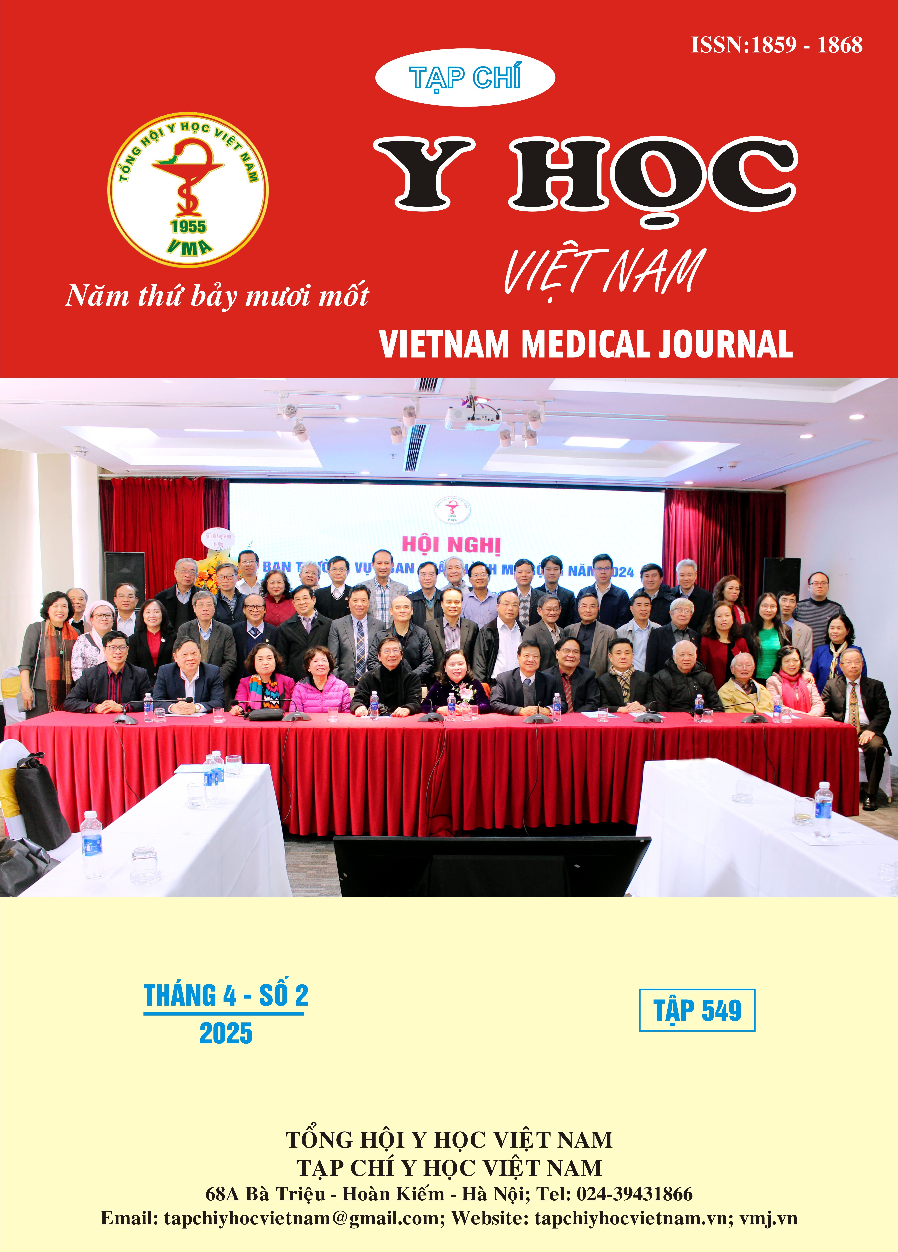CLINICAL AND IMAGING CHARACTERISTICS OF SUBSTERNAL GOITER
Main Article Content
Abstract
Substenal goiter (SG) is a condition where the thyroid gland extends into the mediastinum, accounting for approximately 3-19% of cases of nodular goiter. Diagnosis is based on clinical symptoms such as persistent cough, difficulty swallowing, and respiratory distress due to tracheal compression, combined with chest X-rays and computed tomography (CT) scans. Surgery is the primary treatment method, but it can present many challenges due to the large size of the goiter and its proximity to critical structures such as the trachea. Therefore, this study was conducted with the aim of evaluating the clinical and imaging characteristics of MG. Subjects and Methods: A retrospective descriptive study was conducted on 62 eligible patients diagnosed and treated at Viet Duc Friendship Hospital from January 1, 2014, to March 31, 2024. Results: The average age of the patients was 59.16 ± 17.01, with a female-to-male ratio of 5:1. Clinically, grade 3 and 4 goiters accounted for 32.3% of cases, with 20 patients. The most prominent symptoms were dysphagia (37.1%) and dyspnea (32.3%). On chest X-rays, a mediastinal mass causing tracheal and esophageal displacement was observed in 95.2% of cases. On CT scans, the average size of the mediastinal extension was 4.67 ± 2.16 cm, with the largest being 9 cm. Tracheal compression was observed in 59/62 (95.2%) cases, including 5 cases of grade III stenosis (8.1%) and 22 cases of grade II stenosis (35.5%). No cases of grade IV or V stenosis were observed. Conclusion: SG is often detected late in middle-aged individuals and is more common in women. Common symptoms include dysphagia and dyspnea. Chest X-rays reveal a mediastinal mass causing tracheal displacement. CT scans show that SG has clear boundaries and often compresses the trachea, with many cases exhibiting moderate to severe tracheal stenosis
Article Details
Keywords
Substernal goiter, X-ray, CT scan
References
2. Veronesi G, Leo F, Solli PG, D’Aiuto M, D’Ovidio F, Mazzarol G, et al. Life-threatening giant mediastinal goiter: a surgical challenge. J Cardiovasc Surg (Torino). 2001 Jun;42(3):429–30.
3. Freitag L, Ernst A, Unger M, Kovitz K, Marquette CH. A proposed classification system of central airway stenosis. Eur Respir J. 2007 Jul;30(1):7–12.
4. Nguyễn Hoài Nam, Trần Minh Bảo Luân. Đánh giá kết quả điều trị ngoại khoa bướu giáp thòng trung thất. TCYHTPHCM. 2009;13(1):95–95.
5. Chow T, Chan T, Suen D, Chu D, Lam S. Surgical management of substernal goitre: Local experience. Hong Kong medical journal = Xianggang yi xue za zhi / Hong Kong Academy of Medicine. 2005 Nov 1;11:360–5.
6. Trần Hồng Quân. Nghiên cứu chẩn đoán và điều trị ngoại khoa bướu giáp cổ - trung thất. Luận văn CKII Học viện Quân Y. 2007;
7. Sancho JJ, Kraimps JL, Sanchez-Blanco JM, Larrad A, Rodríguez JM, Gil P, et al. Increased mortality and morbidity associated with thyroidectomy for intrathoracic goiters reaching the carina tracheae. Arch Surg. 2006 Jan;141(1):82–5.


